It’s on a regular basis suggestion to construct up a bit of bit of experience caring to your dragon sooner than you start complicating his habitat.
Nonetheless whenever you’ve managed to take care of your lizard healthful and joyful for about various months or so, there’s nothing unsuitable with together with some decoration to your pet’s home.
You’ll be able to achieve this in numerous strategies.
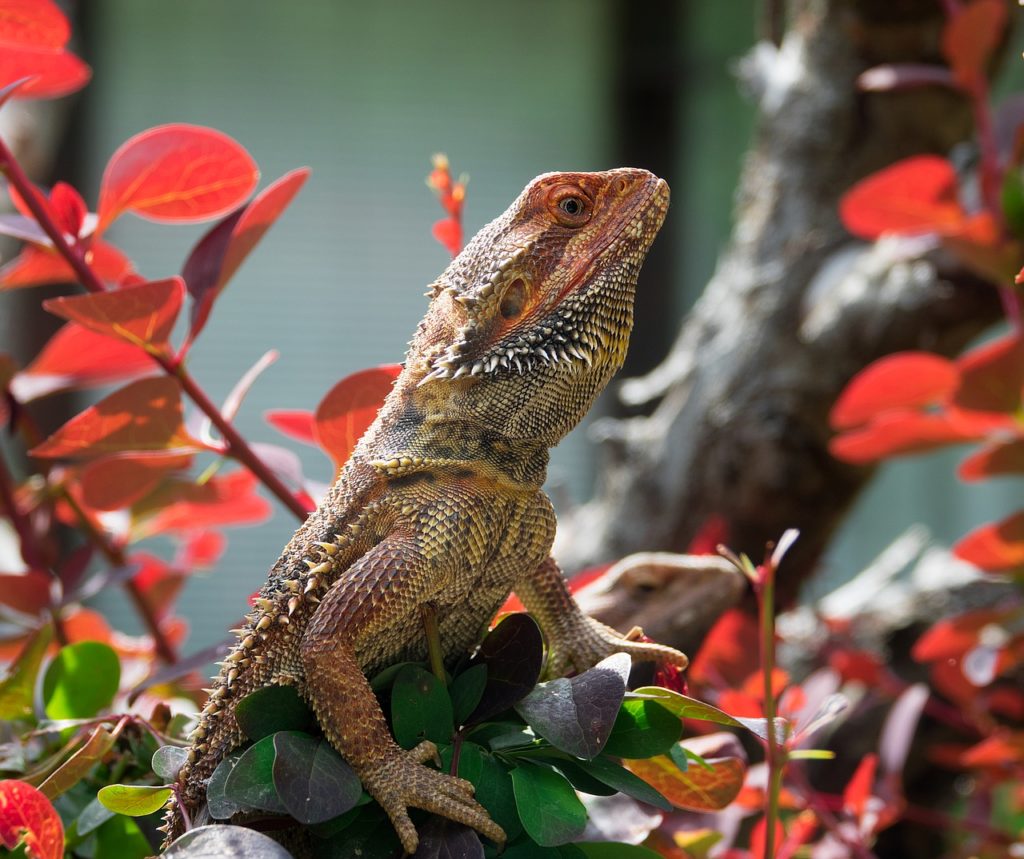
You might, as an illustration, join cheap pictures to the once more wall of the habitat, or you possibly can arrange some faux rockwork.
You may also add some realistic-looking meals and water dishes, or experiment with utterly totally different substrates.
Nonetheless many bearded dragon keepers marvel if they will add
vegetation to their pet’s enclosure.
We’ll uncover this drawback beneath, degree out various the problems
you’ll must ponder sooner than doing so, and share various pointers which is able to help
you in your terrarium-decorating endeavors.
Can You Maintain Dwell Vegetation in a Bearded Dragon Tank?
In short: Positive, you’ll arrange keep vegetation in your bearded
dragon’s enclosure.
However, there are a choice of stuff you’ll wish to take into account sooner than heading to the native nursery to replenish on greenery.
As an example, you’ll must reply the following questions
on your self:
- Do you’ve got any experience caring for
houseplants or are you starting from scratch? - Do you’ve got the extra time, energy and must
not solely care to your pet, nonetheless some keep vegetation too? - Are you eager to easily settle for the small, nonetheless
non-zero threat that the vegetation will damage your pet?
Every time you improve the complexity of your lizard’s habitat, you improve the chances of 1 factor going unsuitable.
That is the explanation most breeders – whose success is immediately tied to their capability to take care of their dragons healthful – protect fairly easy, utilitarian habitats.
However, there is a important flip side to this coin: Rising the complexity of your pet’s habitat by together with points like climbing branches, cage furnishings and vegetation will likely improve your pet’s top quality of life.
Vegetation may also allow you to benefit from your pet and his habitat additional, which may help encourage you to spend additional time caring to your pet.
So, as a keeper, you may wish to weigh these competing forces and resolve how important vegetation are to you and the way in which so much hazard you may be cosy accepting on behalf of your pet.
If, after considering these factors, you are feeling like vegetation are suggestion to your pet’s enclosure, you’ll begin attempting to select the right vegetation to your pet’s enclosure.
9 Safe Bearded Dragon Vegetation
The subsequent 9 vegetation are among the many many most safe species to
use in bearded dragon enclosures, they normally’re usually well-suited to terrarium
life.
1. Haworthia Vegetation (Haworthia spp.)
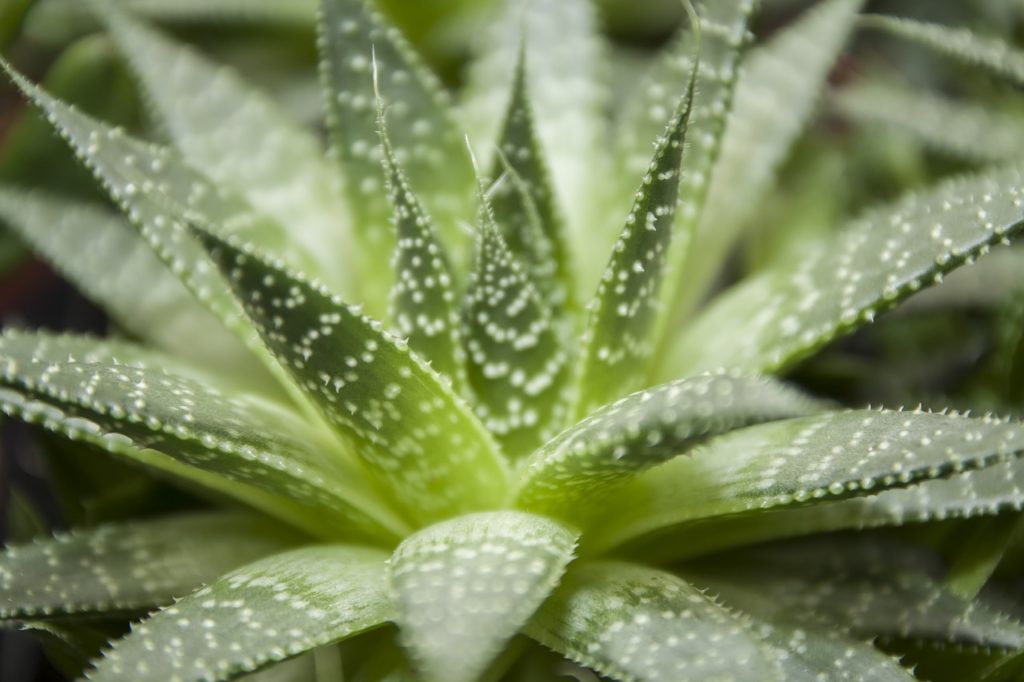
Hailing from arid areas of South Africa, haworthia vegetation
are various the most popular terrarium vegetation for people who preserve
desert-dwelling species.
There are dozens of species on this genus, nonetheless Haworthia cooperi and Haworthia reinwardtii are two of most likely essentially the most extensively obtainable and well-suited to your bearded dragon enclosure.
Nonetheless, most species on this genus are hardy, simple to maintain up and considered completely harmless to bearded dragons.
One among many points that make haworthia vegetation so well-suited for bearded dragon habitats is their small measurement.
They generally develop as a small rosette of leaves and most solely measure various inches in diameter. Some species even have brightly colored leaf concepts or different types of attention-grabbing markings.
2. Echeveria (Echeveria spp.)
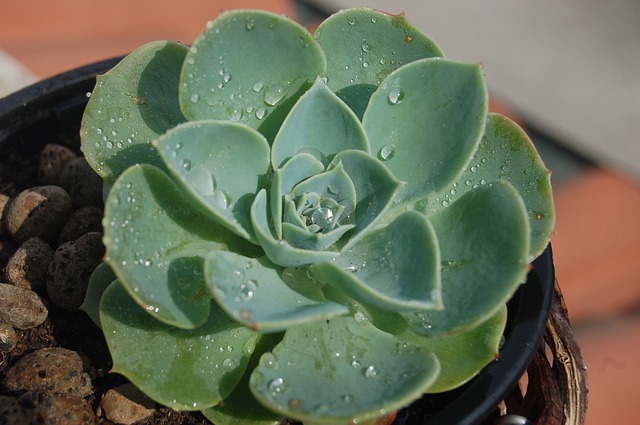
Like haworthia vegetation, echeveria vegetation are native to arid areas, nonetheless these vegetation are native to the Americas.
It’s a large genus of vegetation, with many sources citing larger than 150 named species.
Furthermore, botanists have created various cultivars and hybrids, offering you with far more choices.
Echeveria vegetation are considered harmless to bearded dragons, they normally usually thrive when planted in terrariums.
Among the many species throughout the genus are noteworthy for being able to thrive in dimmer conditions than one other succulents.
Many echeveria vegetation develop as rosettes or globe-shaped
vegetation, and several other different species have partaking colors.
3. Prickly Pear Cacti (Opuntia spp.)
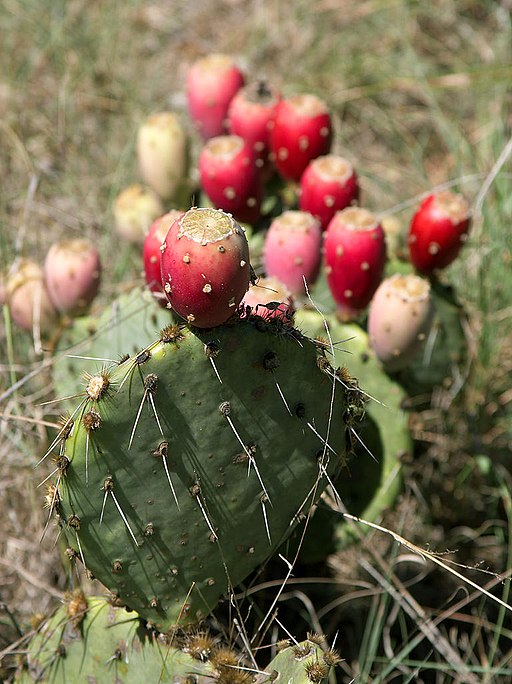
Prickly pear cacti are native to the Americas, nonetheless they’ve been unfold in all places on the earth by folks.
They’re grown for human meals and as ornamental vegetation, they normally moreover work successfully in desert terraria.
Prickly pear cacti are normally not solely edible for bearded dragons, nonetheless some keepers present their lizards prickly pear cactus pads notably as meals.
There are many species of prickly pear cacti, they normally differ by the use of peak, morphology, environmental requirements, and color.
Most are inexperienced, nonetheless others, such as a result of the purple prickly pear (Opuntia macrocentra) are pretty vibrant.
As their title suggests, prickly pear cacti bear spines which is able to injure or irritate your lizard. However, you’ll usually uncover cacti in the marketplace which have had their spines eradicated. Phrase that you can be should prune your prickly pear cactus recurrently to forestall it from outgrowing the habitat.
4. Aloe Vegetation (Aloe vera)
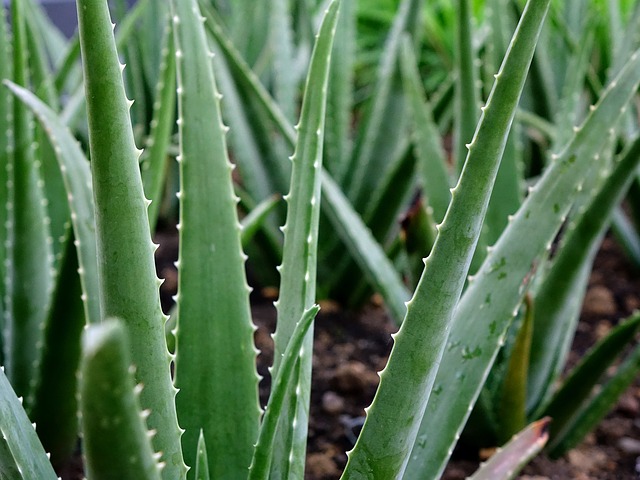
Prolonged utilized by folks for his or her medicinal benefits, aloe vegetation usually make good additions to bearded dragon habitats.
Aloe vegetation are historically native to arid areas surrounding the Indian Ocean, nonetheless – like prickly pear cacti – they’ve been launched to numerous totally different areas world extensive.
Phrase that the genus Aloe is form of large – it accommodates on the very least 500 described species. A number of of those species develop pretty large and attain tree-like proportions, so be sure that to comply with smaller species and cultivars.
Most aloe vegetation bear inexperienced or greenish leaves, nonetheless some have very partaking mottled markings.
Some aloe vegetation bear very spikey leaves, nonetheless they not typically
appear to set off points for pet lizards.
5. Dwarf Jade Vegetation (Portulacaria afra)
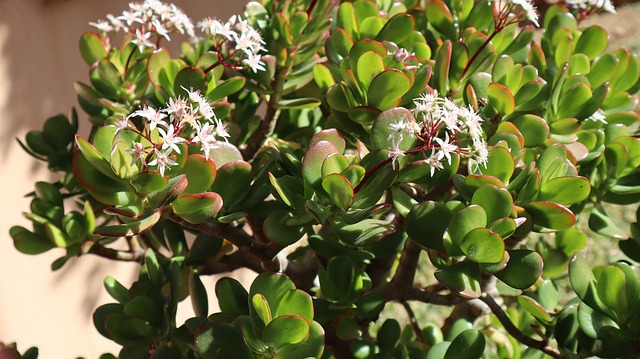
Native to the dry, rocky components of jap South Africa, dwarf jade vegetation generally develop as small bushes throughout the wild.
However, with widespread pruning, they’re typically saved comparatively small – which is part of the reason they’re moreover in type amongst bonsai lovers.
Dwarf jade vegetation are normally not considered toxic to bearded dragons, and folks even eat the leaves in salads.
However, it is vital that you just don’t confuse the dwarf jade plant (Portulacaria afra) we’re discussing proper right here with the similar-looking (and additional extensively obtainable) jade plant (Crassula ovata).
Whereas the earlier is considered completely harmless, the latter is mildly toxic.
It is usually simple to get dwarf jade plant cuttings to take
root, which makes it simple to point out a single jade plant into various smaller
vegetation briefly order.
6. Basil (Ocimum basilicum)
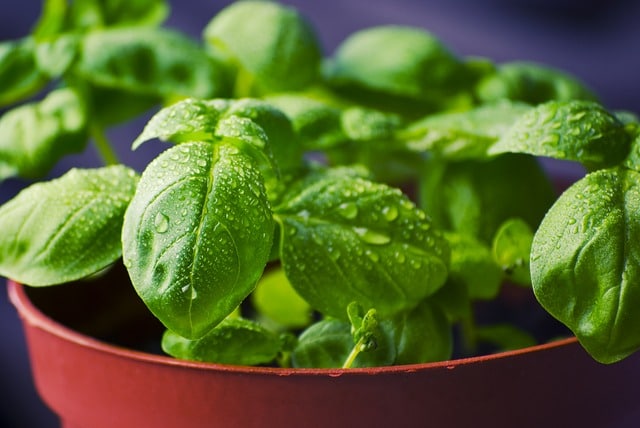
This in type kitchen herb may also be a fairly good chance to your bearded dragon’s enclosure.
Basil grows best out of doors, nonetheless with care and high-quality lighting, it is doable to get it to thrive indoors (harking back to in your dragon’s enclosure) too. Basil generally grows best when saved comparatively warmth, making it pretty well-suited for use in a terrarium.
Basil is native to the humid areas of Southeast Asia, which is clearly not much like your bearded dragon’s habitat.
However, the plant would not tolerate moist roots very successfully, so the quick drainage your bearded dragon’s substrate provides will usually show you how to give it enough water to survive.
Your bearded dragon may characterize the most important threat to the
plant, as he may uncover the leaves tasty. Basil isn’t toxic to your lizard, nonetheless
he may devour it additional shortly than the plant can tolerate.
7. Parsley (Petroselinum crispum)
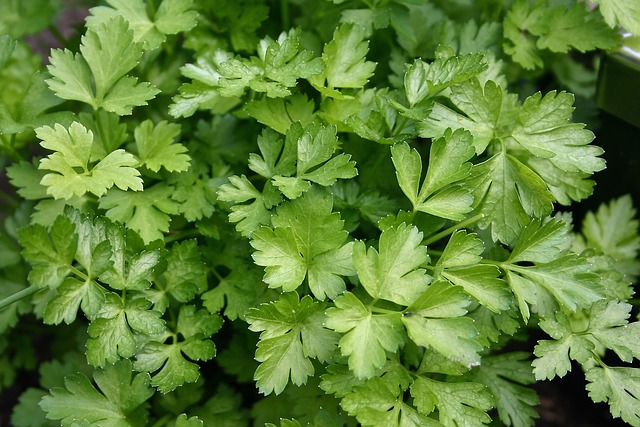
One different in type culinary plant, parsley is an excellent chance to your bearded dragon’s enclosure.
Parsley will develop indoors if prepare accurately, although it grows best in precise sunshine.
Nonetheless, it’ll usually survive in warmth, well-lit terraria for a while sooner than it begins to get significantly spindly.
The best goal to place in parsley in your bearded dragon’s enclosure is that it is not solely an edible plant nonetheless a fairly nutritious one too.
Some keepers recurrently embrace parsley on their pet’s menu, so you’ll merely develop it in your habitat to verify your pet on a regular basis has tasty, edible vegetation obtainable.
Parsley is native to the Mediterranean space, nonetheless it has
been transplanted in all places on the earth by folks.
8. Oregano (Origanum vulgare)
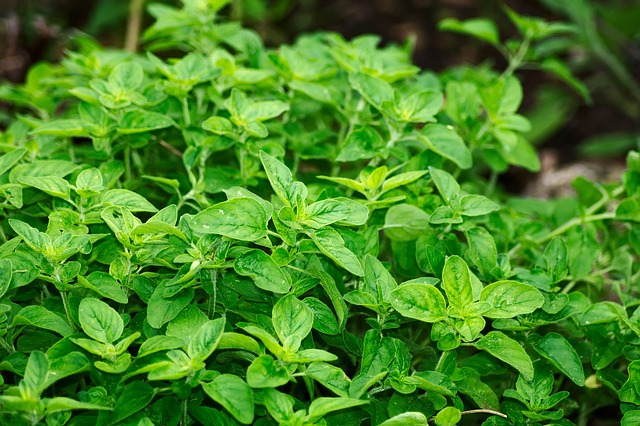
Oregano is one different herb that you can be must ponder planting in your dragon’s enclosure.
Oregano is safe and edible (although your bearded possibly acquired’t be very occupied with it), and it’s free of thorns or another potential dangers.
Oregano is native to western Asia and the Mediterranean space of Europe, the place it thrives throughout the comparatively warmth and dry native climate.
And, like many various herbs, oregano requires a soil or substrate that offers great drainage. Every of these traits make oregano well-suited for the setting in your bearded dragon’s habitat.
Oregano is a reasonably little plant which is able to attain 3 toes
in peak when grown out of doors, nonetheless most indoor-grown specimens will keep so much
smaller.
9. Mulberry (Morus spp.)
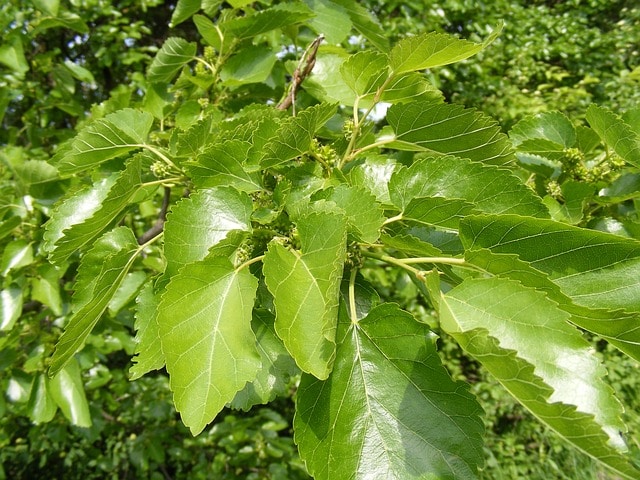
In distinction to the succulents and herbs we’ve beforehand talked about, mulberry is a woody plant that all the time grows into an accurate tree.
This suggests you’ll should prune it recurrently to take care of it small enough to fit in your pet’s habitat, and even then, it’ll be best suited to keepers who current their dragon with a relatively tall enclosure.
Mulberry requires additional water and moisture than the alternative vegetation we’ve talked about, so it is possibly intelligent to depart mulberry vegetation in a separate pot in its place of planting them immediately throughout the substrate of your lizard’s habitat.
This will additionally make it simple to maneuver the plant out of doors recurrently, to help assure it receives enough daylight.
Mulberry fruits are edible, nonetheless you possibly acquired’t see your
plant fruit inside a terrarium. Nonetheless, the leaves are moreover safe to your
lizard to eat, and loads of reptiles appear to hunt out them pretty tasty.
Doubtlessly Poisonous Vegetation for Bearded Dragons
The subsequent vegetation are acknowledged to be poisonous to some animals, they normally may characterize a threat to your bearded dragon too.
It’s doable (if not going) that just a few of those are safe for bearded dragons to eat, nonetheless given the dearth of concrete information obtainable, it is greater to err on the side of warning.
Phrase that poisonous vegetation fluctuate in various strategies. Many are toxic for some animals, however harmless for others.
Furthermore, some may set off lack of life in animals that eat them, whereas others solely set off minor indicators, harking back to intestinal disturbances.
Extra, many toxic species have a combination of edible and
dangerous tissues. As an example, the fruits of many vegetation are utterly safe to
eat, whereas their leaves or stalks may comprise harmful compounds.
- Acokanthera – Acokanthera spp.
- Amaryllis – Amaryllis spp.
- Angel’s Trumpet – Datura spp.,
- Apple – Malus spp.
- Avocado – Persea americana
- Azalea
– Rhododendron canadenis - Baneberry – Actaea spp.
- Belladonna – Atropa belladonna
- Fowl of Paradise – Poinciana spp.
- Bitter
Melon – Momordica charantia - Bittersweet – Celastrus spp.
- Black Locust – Robinia pseudoacacia
- Boxwood – Boxus spp.
- Braken Fern – Pteridium aquilinum
- Buckthorn – Karwinskia spp.
- Burdock – Arctium spp.
- Buttercup – Ranunculus spp.
- Caladium – Caladium spp.
- Calla Lily – Zantedeschia aethiopica
- Catclaw Acacia – Acacia greggii
- Castor Bean – Ricinus communis
- Cherry – Prunus spp.
- Chinaberry – Melia azadarach
- Clematis – Clematis spp.
- Coral Plant – Jatropha mutifida
- Crocus – Cholochicum autumnale
- Cycad– Cycas revoluta
- Daffodil – Narcissus tazetta
- Daphne – Daphne mezerum
- Lack of life Camas – Zigadenus spp.
- Delphinium – Delphinium spp.
- Devil’s Ivy – Epipremnum aureum
- Dieffenbachia – Dieffenbachia spp.
- Eggplant – Solonum melongena
- Elderberry – Sambucus mexicana
- English Ivy – Hedera spp.
- Euonymus – Euonymus spp.
- Pennyroyal – Mentha pulegium
- 4 o’clock – Mirabilis jalapa
- Heliotrope – Heliotropium spp.
- Henbane – Hyoscyamus niger
- Holly – Ilex spp.
- Horse Chestnut – Aesculus spp.
- Horse Nettle – Solanum carolinense
- Hyacinth – Hyacinthus orientalis
- Hydrangea – Hydrangea spp.
- Iris – Iris spp.
- Jack-in-the-Pulpit – Arisaema spp.
- Jerusalem Cherry – Solanum spp.
- Jonquil – Narcissus jonquilla
- Juniper – Juniperus spp.
- Lantana – Lantana camara
- Larkspur – Delphinium spp.
- Laurel – Kalmia spp.
- Lily-of-the-Valley – Convalleria majalis
- Lobelia – Lobelia spp.
- Locoweed – Astragalus spp. and
- Lupine – Lupinus spp.
- Marijuana – Cannabis spp.
- Milkweed – Asclepias spp.
- Mistletoe – Phoradendron villosum
- Mock Orange – Philadelphus spp.
- Moonseed – Menispermum canadense
- Monkshood – Aconitum spp.
- Morning Glory – Ipomoea violacea
- Narcissus – Narcissus spp.
- Oleander – Nerium oleander
- Oxytopis — Oxytopis spp.
- Peach – Prunus persica
- Peony – Paeonia officinalis
- Periwinkle – Vinca spp.
- Peyote – Lophophora williamsii
- Philodendron – Philodendron spp.
- Plum – Prunus spp.
- Poison Hemlock – Conium maculatum
- Poison Ivy/Oak/Sumac – Toxicodendron spp.
- Poinsettia – Euphorbia pulcherrima
- Poppy – Papaver spp.
- Pokeweed – Phytolacca americana
- Potato – Solanum tuberosum
- Pothos – Eprimemnum aureum
- Primrose – Prmula spp.
- Privet – Ligustrum vulgare
- Ragwort – Senecio spp.
- Rhododendron – Rhododendron spp.
- Rhubarb – Rheum rhabarbarum
- Rosary Pea – Abrus precatorius
- Sage – Salvia officinalis
- Shamrock Plant – Medicago lupulina
- Skunk Cabbage – Symplocarpus foetidus
- Snowdrop – Galanthus nivalis
- Sorrel – Rumex spp.
- Spurges – Euphorbia spp.
- Star of Bethlehem – Ornithogalum umbellatum
- Sweet Pea – Lathyrus odoratus
- Taro – Colocasia spp.
- Tobacco Plant – Nicotiania spp.
- Tomato Plant – Lycopersicon esculentum
- Tulip – Tulipa spp.
- Virginia Creeper – Panthenocissus
quinquefolia - Vetches – Vicia spp.
- Water Hemlock – Cicuta spp.
- Waxberry – Symphoricarpos albus
- Wisteria – Wisteria spp.
- Picket Sorrel — Oxalis spp.
- Yew – Taxus spp.
It bears mentioning that some analysis have urged that some lizard species are able to detect potential toxins in plant tissues and stay away from consuming them.
None have notably focused on bearded dragons, nonetheless I’ve personally saved pothos vegetation with bearded dragons dozens of events and in no way had a problem, nor seen a bearded dragon even type one in all many leaves.
Moreover, researchers have documented lizards consuming vegetation acknowledged to comprise toxins with out struggling sick outcomes
Ultimately, you must merely accept the reality that so much stays to be found in regards to the relationship between toxic vegetation and reptiles.
So, you’ll merely should err on the side of warning and make the very best picks you’ll on behalf of your pet.
Placing in Vegetation in Your Bearded Dragon’s Tank
Now that you just’ve chosen the vegetation you might want to preserve in your dragon’s habitat, you may must resolve the way in which you might want to arrange them.
There are two major decisions for arid habitats, which we’ll speak about beneath.
Arrange the Vegetation Straight throughout the Habitat’s Substrate
Inserting vegetation correct throughout the substrate of your pet’s habitat is usually most likely essentially the most aesthetically pleasing, however troublesome technique.
To tug off this technique, you’ll wish to make use of a substrate that is acceptable to your lizard and the vegetation. Furthermore, it could make habitat maintenance much more robust.
However, for these eager to experiment and lose various
vegetation throughout the course of, the outcomes might be pretty visually beautiful.
Depart the Vegetation in Pots
The very best strategy in order so as to add vegetation to your enclosure is to take motion within the an identical strategy you’d add vegetation to your particular person home – merely stick them throughout the habitat inside typical plant pots.
This doesn’t on a regular basis look unbelievable, nonetheless you’ll obscure and conceal pots with corkbark, rocks and totally different decorative objects.
Together with making habitat maintenance easier, leaving vegetation inside separate pots moreover lets you rotate them additional merely.
In several phrases, you’ll protect various potted vegetation and periodically place them in your pet’s habitat.
As soon as they start displaying indicators of needing additional gentle, you’ll merely switch them exterior for various weeks until they perk up a bit.
It is usually intelligent to re-pot vegetation sooner than together with them to
your terrarium and use pots that may current enough space for the plant’s
roots and nonetheless match successfully throughout the habitat.
Can You Use Artificial Vegetation in Your Bearded Dragon’s Habitat?
Given various the challenges involved in using keep vegetation
to your bearded dragon’s habitat, many keepers ponder selecting artificial
vegetation in its place.
Plastic vegetation current obvious benefits over keep vegetation in
various strategies:
- They don’t require water or specific lighting
- You don’t have to stress about them dying
- Your bearded dragon can knock them over every
day with out harming them - You probably can switch them spherical as usually as you need
- You probably can merely wash them off within the occasion that they turn into
soiled
Nonetheless the larger question is: Are plastic vegetation safe
to utilize with bearded dragons?
As with keep vegetation, I’ll make no ensures in regards to the safety of using artificial vegetation in a bearded dragon’s enclosure.
Nonetheless many keepers – along with yours actually — have achieved so effectively. As quickly as as soon as extra, your decision will rely in your comfort with hazard.
Plastic vegetation are safer than keep vegetation in some strategies, nonetheless
they characterize the next threat to your lizard in numerous strategies.
On one hand, whereas plastic is certainly not points that we should all the time encourage our dragons to eat, they’re generally not thought-about “toxic” substances.
Really, part of the reason plastic is utilized in so many various features is that it isn’t terribly reactive.
That talked about, the plastics used to produce low-cost terrarium vegetation may be contaminated with completely something, along with toxic chemical compounds.
So, within the occasion you obtain high-quality, US-made plastic terrarium
vegetation, you possibly wouldn’t have to stress about them poisoning your lizard.
However, the larger hazard is that the plastic foliage may set off a blockage in your pet’s digestive tract.
The plastic is unlikely to interrupt down very so much whereas inside your pet’s physique and given the tight twists and turns of the intestinal tract, large objects are very susceptible to turn into caught.
In such circumstances, you’re susceptible to uncover your dragon lying ineffective throughout the habitat one morning, or – in a “best case” scenario – you’ll discover the difficulty in enough time to go to the vet.
As quickly as there, you’ll spend an unbelievable sum to have the plastic surgically eradicated, with no guarantee that your pet will get higher.
None of due to this your lizard will eat plastic vegetation – I don’t think about I’ve ever seen a bearded dragon critically try and devour artificial vegetation.
After all, even most likely essentially the most realistic-looking artificial vegetation undoubtedly don’t scent or type precise. Nonetheless, in case your lizard does try and eat them, you’re going to experience some points.
So, within the occasion you do resolve to incorporate artificial vegetation in
your pet’s habitat, it is likely intelligent to take care of your dragon terribly well-fed
and to supply a great deal of precise greens on a extremely frequent basis.
Conclusion
Vegetation might be a great way to spruce up your dragon’s habitat and improve the complexity of the enclosure. Nonetheless there are risks involved with doing so.
Ultimately, you’ll merely wish to ponder your urge for meals for hazard and make the very best decision you’ll on behalf of your pet.
Ultimate change on 2025-01-05 / Affiliate hyperlinks / Images from Amazon Product Selling API








Leave a Reply